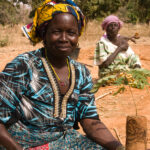Key Terminology: Deforestation, Forest Degradation, and Deforestation
Let’s start with a brief explanation of some fundamental concepts; “deforestation” simply refers to the removal of trees and plants, which can range from management activities to actual destruction of forested areas. “Deforestation,” on the other hand, has a more negative connotation: it refers to deforestation when the removal of forest cover exceeds the regeneration capacity, with severe environmental consequences. “Forest degradation” describes a progressive decline in forest functions due to unsustainable exploitation.
Crucial Importance of Forests
Forests, which cover 31% of the Earth’s land area, are essential for environmental and social sustainability. They host 80% of terrestrial species and play a key role in mitigating climate change through photosynthesis. Over 1.6 billion people, including indigenous communities, rely on forests for food, medicine, and energy. Forests also provide ecosystem services such as water purification and pollination, and hold significant cultural value.
Devastating Impacts of Deforestation
The indiscriminate cutting down of forests causes severe damage to biodiversity, climate, and human health. Deforestation results in the loss of habitat for millions of species and negatively impacts hydrological cycles, increasing greenhouse gas emissions and destroying ecosystems. These changes threaten the survival and well-being of communities dependent on forests.
Main Causes of Deforestation
The main causes of deforestation are agricultural expansion, intensive livestock farming, mining, and infrastructure development, often exacerbated by political factors and local conflicts. FAO data reveals that agriculture is the primary cause on nearly every continent, followed by livestock farming.
Global Overview of Deforestation
According to data from the World Resources Institute and Global Forest Watch, in 2023, the total loss of primary tropical forests was 3.7 million hectares, a 9% decrease from 2022. The most affected areas are Brazil, Colombia, Bolivia, Laos, Nicaragua, the Democratic Republic of Congo, and Indonesia. Some countries, like Brazil and Colombia, have seen reductions, while others, such as Bolivia, Laos, and Nicaragua, have experienced significant increases due to fires and agricultural expansion.
Solutions to Combat Deforestation
To halt deforestation, governments need to adopt ambitious forest conservation policies based on science. At the same time, it is crucial for citizens to make conscious and sustainable choices, such as opting for food from environmentally friendly agricultural practices and products made from recycled or responsibly sourced wood. Local reforestation initiatives can also make a significant contribution.
At Children in the Desert, we have been engaged in reforestation projects in Burkina Faso, Niger, and Senegal for years. Supporting our reforestation projects contributes to the future of the planet.
Green Re-Evolution is the Bambini nel Deserto program that embodies the concrete commitment to actions against climate change.


